How To Tell Time? – Understanding Analog Clocks
Table of Contents
Introduction
Analog Clock
Telling time is an essential skill that we use in our daily lives. One of the traditional methods of telling time is through an analog clock. Analog clocks have been around for centuries and are still widely used today. They consist of an hour hand, a minute hand, and sometimes a second hand, all of which move around a circular dial to indicate the time.
Analogy of Definition
What is Analog Clock?
An analog clock is a timekeeping device that uses rotating hands to display the time. The hour hand is the shorter of the two hands and moves slowly, indicating the hour of the day. The minute hand is longer and moves faster, pointing to the minutes. Some analog clocks also have a second hand, which moves continuously around the dial, measuring seconds.
Method
The Hands of Clock
In analog clocks, there are three hands at the center that tell time: the hour hand, the minute hand, and the second hand.
Hour Hand
The hour hand is the shortest and tells you the hour. It takes 12 hours to go around the clock, moving 30 degrees each hour and 0.5 degrees each minute.
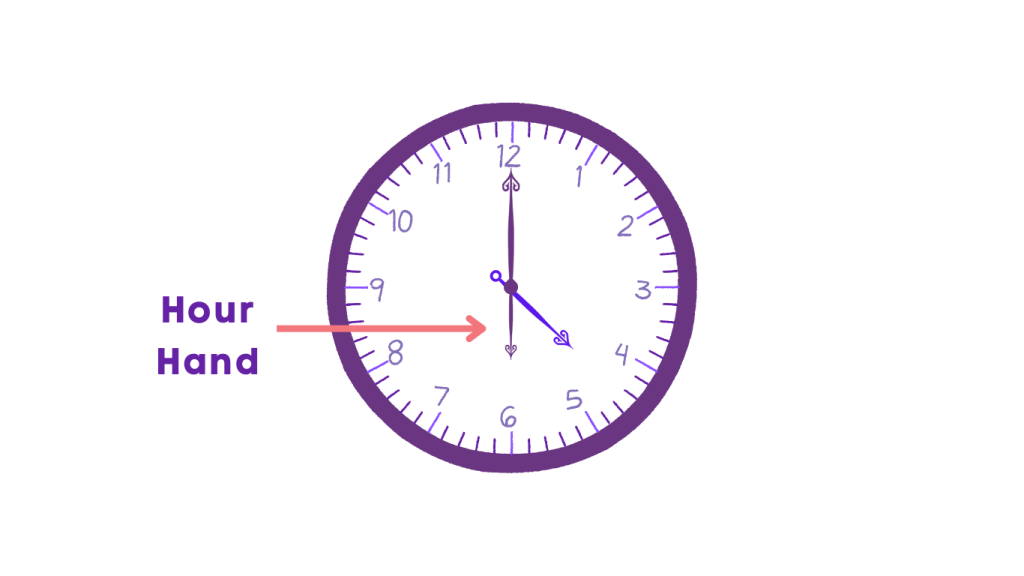
Minute Hand
The minute hand is longer and tells you the minutes. It takes one hour to go around the clock, moving 6 degrees each minute.
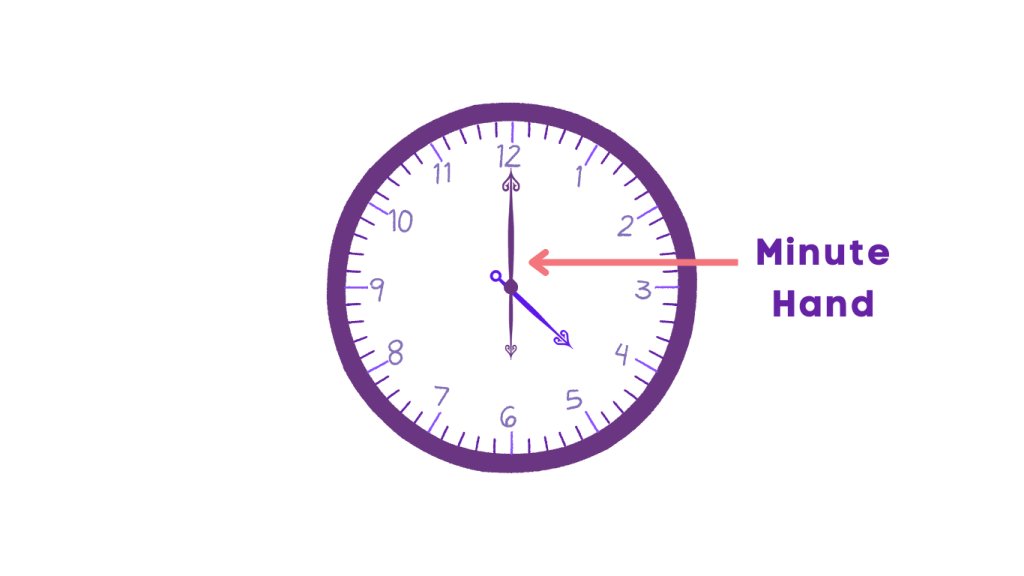
Second Hand
The second hand is the thinnest and moves the fastest. It takes one minute to go around the clock, covering a minute with each full rotation.
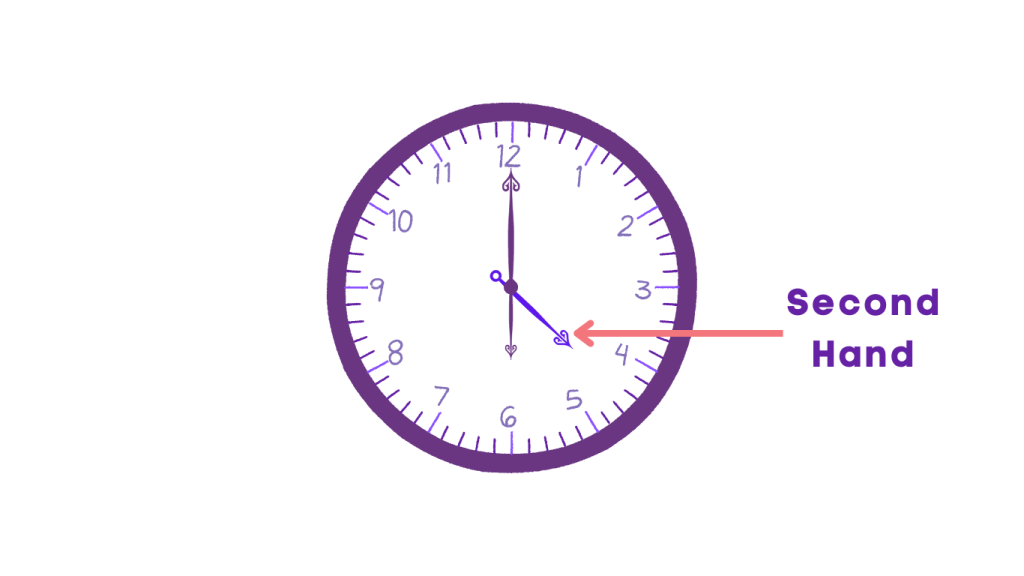
Clock Face
The hands of a clock orbit around what is known as the dial or clock face. Typically, this dial bears the numerical markings from 1 through 12, where 12 rests atop, 6 sits below, 9 occupies the leftmost position, and 3 stands proudly on the right. The intervening numbers fill the spaces in between.
Each of these numbered positions serves as an hour marker, marking the passage of time. Between these hour markers are four indicators, each denoting a single minute. Remarkably, these same indicators serve the dual purpose of marking seconds as well.
Sometimes, clocks or watches might use Roman numerals instead of regular numbers, but telling time remains the same.
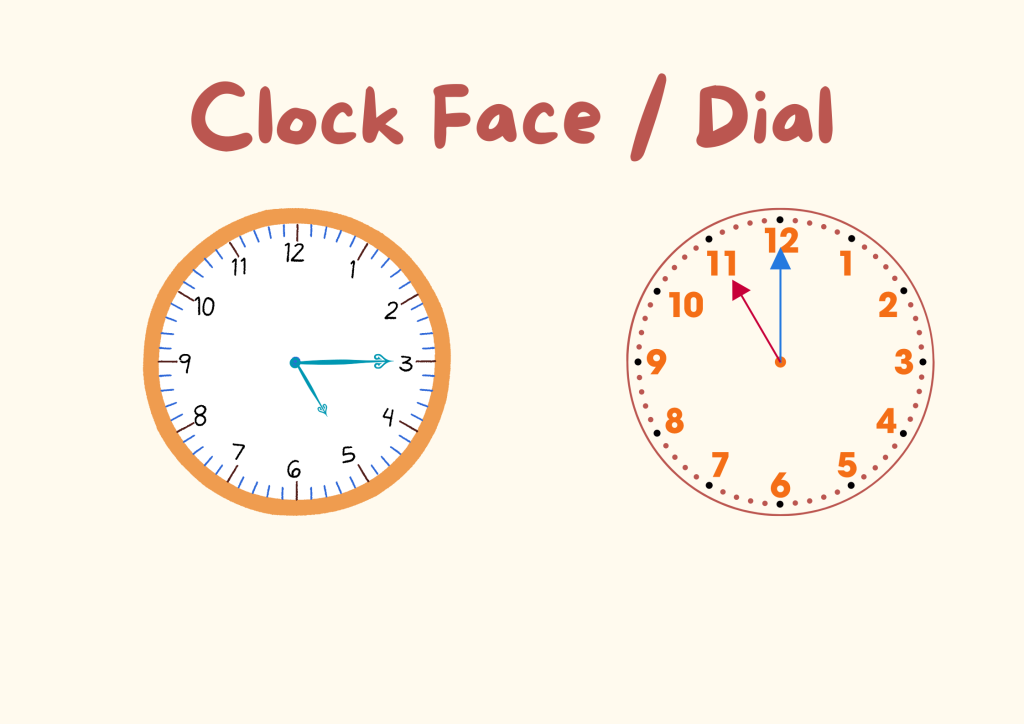
To and Past in Analog Clock
When the minute hand is to the right side of the clock, we say it is “past”.
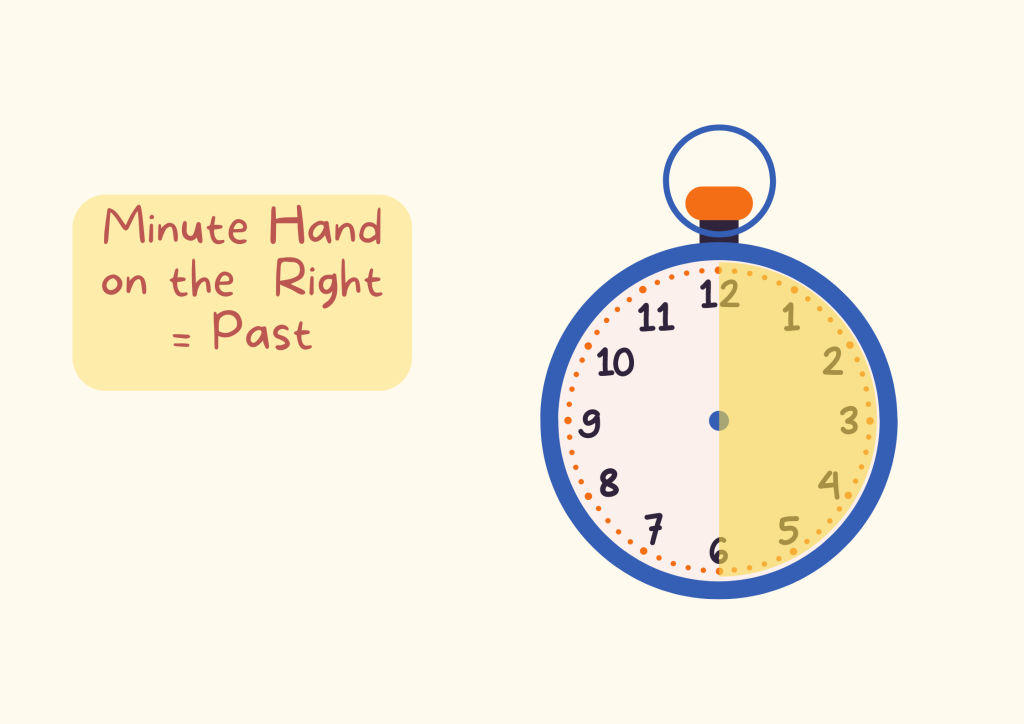
When the minute hand is to the left side of the clock, we say it is “to”.
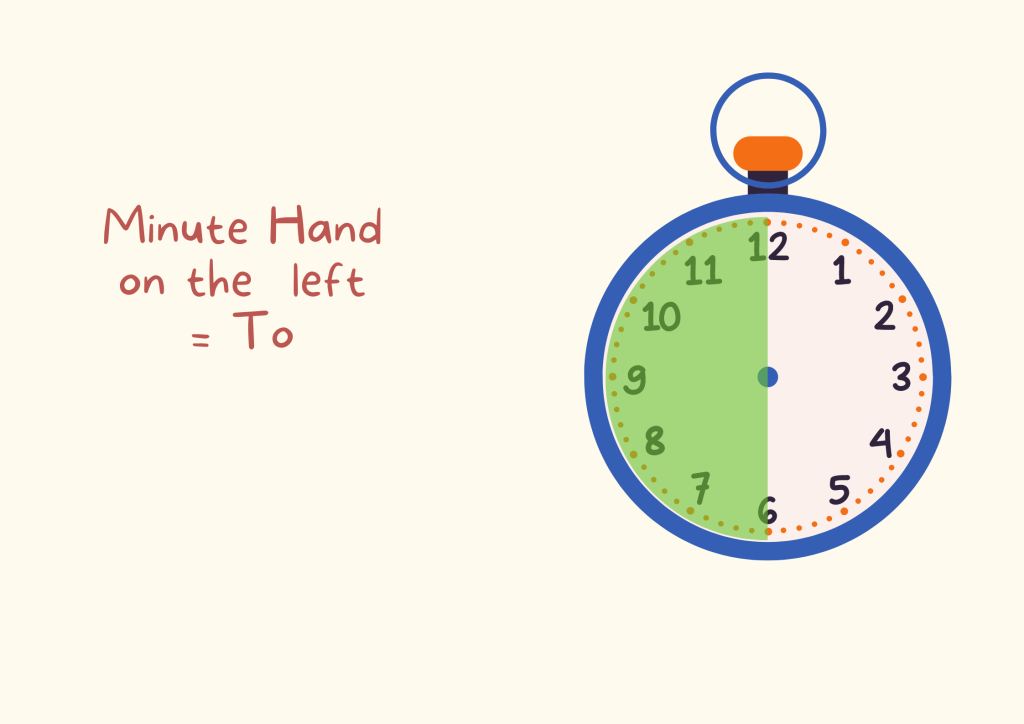
What is Quarter Past, Half Past, and Quarter Past?
Quarter Past
When we use the phrase “quarter past,” it indicates that it’s exactly 15 minutes past the hour. When the minute hand aligns with the number 3 on the clock, it signifies that a quarter of an hour, or 15 minutes, has elapsed since the previous hour. For instance, if it’s “quarter past four,” the time is 4:15.
Half Past
“Half past” denotes that it’s 30 minutes past the hour. When the minute hand points directly at the number 6 on the clock, it indicates that half an hour, or 30 minutes, has passed since the previous hour. So, if it’s “half past nine,” the time is 9:30.
Quarter To
“Quarter to” refers to a time that is 15 minutes before the next hour. When the minute hand points at the number 9 on the clock, it suggests that there are 15 minutes remaining until the clock strikes the next hour. For example, if it’s “quarter to eleven,” the time is 10:45.
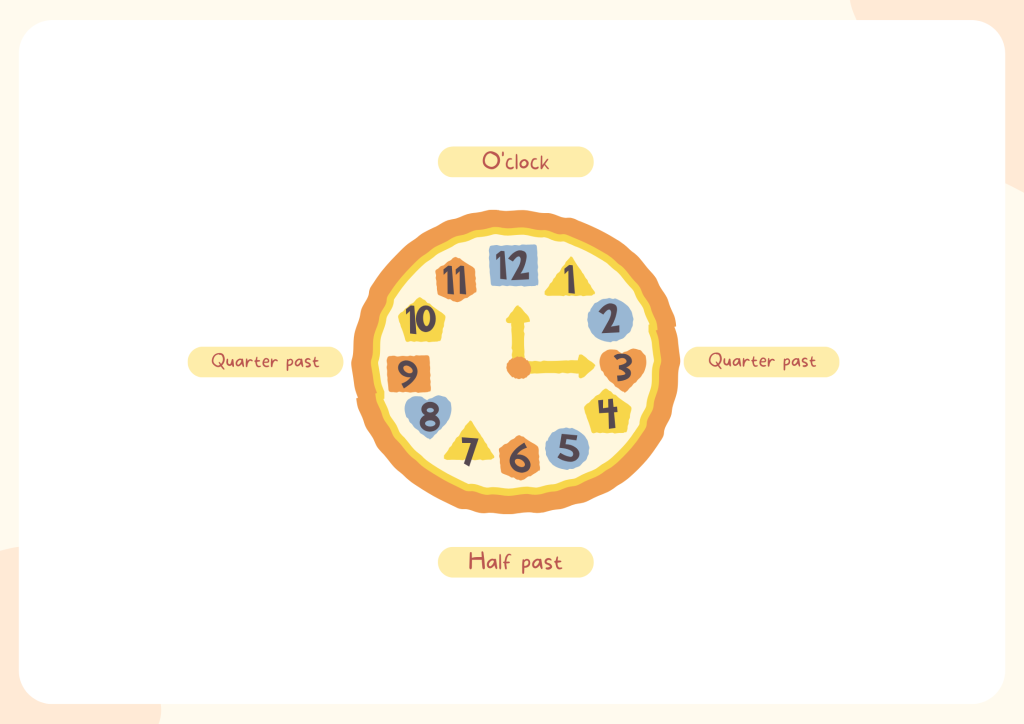
Reading an Analog Clock
To read an analog clock, start by looking at the hour hand. The position of the hour hand tells you the hour. Next, observe the minute hand. The minute hand points to the minutes, and you can determine the exact time based on its position. If there is a second hand, it moves continuously, marking the seconds.
Examples
Reading the Analog Clock
Imagine the time is 3:45. The hour hand will be pointing directly at the 3, indicating 3 o’clock. The minute hand will be pointing at the 9, indicating 45 minutes. Therefore, the time is 3:45.
Quiz
Tips and Tricks
1. The Basics of Analog Clocks
Tip: The hour hand points to the hour, the minute hand points to the minutes, and the second hand measures seconds. You can learn more by playing interactive games on ChimpVine.
2. Understanding Half Past
Tip: When the minute hand is pointing at the 6, it indicates half past the hour.
3. Mastering Quarter Past
Tip: When the minute hand is pointing at the 3, it indicates a quarter past the hour.
4. Decoding Quarter To
Tip: When the minute hand is pointing at the 9, it indicates a quarter to the next hour.
5. Analog vs. Digital
Tip: Analog clocks use rotating hands, while digital clocks display time using numbers.
Real life application
Story: “The Time Travelers”
In a world where time was of the essence, two time travelers, Max and Emma, embarked on a journey to understand the art of telling time using analog clocks.
Adventure 1: The Clock Tower Challenge
Max and Emma encountered a magnificent clock tower with an analog clock dial. They had to read the time correctly to solve a riddle and unlock the next stage of their journey. By applying their knowledge of analog clocks, they deciphered the time and proceeded to the next challenge.
Adventure 2: The Train Schedule Quest
As they boarded a vintage steam train, Max and Emma had to read the analog clock to determine the departure time. They used the hour and minute hands to calculate the time and ensure they didn’t miss their train.
Adventure 3: The Time Capsule Mystery
In their final challenge, Max and Emma discovered a hidden time capsule buried in the ground. The capsule contained clues that required them to read the analog clock to uncover its secrets. With precision and accuracy, they read the time and unearthed the time capsule.
FAQ's
Like? Share it with your friends
